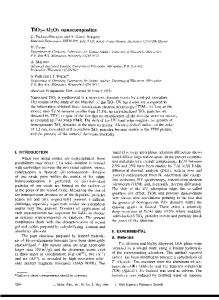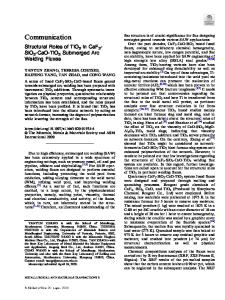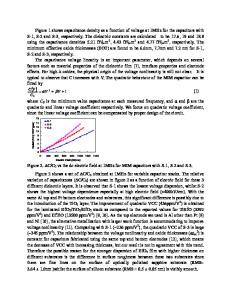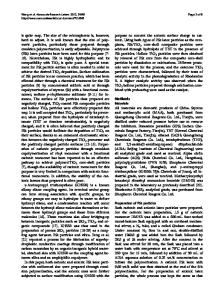High-Performance MIM Capacitors based on TiO 2 /ZrO 2 /TiO 2 and AlO-doped TiO 2 /ZrO 2 /TiO 2 Dielectric Stacks for DRA
- PDF / 899,483 Bytes
- 9 Pages / 612 x 792 pts (letter) Page_size
- 7 Downloads / 426 Views
High-Performance MIM Capacitors based on TiO2/ZrO2/TiO2 and AlO-doped TiO2/ZrO2/TiO2 Dielectric Stacks for DRAM Applications Revathy Padmanabhan1,2, Navakanta Bhat1,2, S. Mohan2, Y. Morozumi3, and Sanjeev Kaushal4 1
Dept. of Electrical Communication Engineering, Indian Institute of Science, Bangalore, India. Centre for Nano Science and Engineering, Indian Institute of Science, Bangalore, India. 3 Tokyo Electron Tohoku Limited, Yamanashi, Japan. 4 Tokyo Electron Santa Clara Labs, Santa Clara, CA, United States. 2
ABSTRACT Metal-insulator-metal (MIM) capacitors for DRAM applications have been realized using TiO2/ZrO2/TiO2 (TZT) and AlO-doped TZT (TZAZT and TZAZAZT) dielectric stacks. High capacitance densities of about 46.6 fF/µm2 (for TZT stacks), 46.2 fF/µm2 (for TZAZT stacks), and 46.8 fF/µm2 (for TZAZAZT stacks) have been achieved. Low leakage current densities of about 4.9 × 10−8 A/cm2, 5.5 ×10 −9 A/cm2, and 9.7 × 10−9 A/cm2 (at -1 V) have been obtained for TZT, TZAZT, and TZAZAZT stacks, respectively. We analyze the leakage current mechanisms at different electric field regimes, and compute the barrier heights. The effects of constant current stress and constant voltage stress on the device characteristics are studied, and excellent device reliability is demonstrated. We compare the device performance of the fabricated capacitors with other stacked high-k MIM capacitors reported in recent literature. INTRODUCTION Metal-insulator-metal (MIM) capacitors are used as memory capacitors in dynamic random access memory (DRAM) applications. The International Technology Roadmap for Semiconductors (ITRS) specifies a continuing increase in capacitance density (> 7 fF/µm2), lower leakage current density (< 10-8 A/cm2), sub-nm equivalent oxide thickness (EOT), and low fabrication/processing temperatures (< 400 0C) for MIM capacitors [1]. Many high-k materials, like Al2O3 [2], HfO2 [3], ZrO2 [4], and Ta2O5 [5], have been used as dielectrics in MIM capacitors. These materials have medium dielectric constant values (k ~ 9 - 35), thus limiting the capacitance densities of these devices. Many dielectrics with higher k values, like TiO2 [6] and SrTiO3 [7], have also been used. While the capacitance densities of these MIM capacitors are higher, the lower bandgap of the dielectric stacks (and thus, the lower barrier offset created at the metal-dielectric interface) is responsible for higher leakage current densities in these devices. Therefore, a combination of medium-k and high-k dielectric stacks like ZrO2/Al2O3/ZrO2 (ZAZ) [8], TiO2/ZrO2 [9], TiO2/Y2O3 [10], and SrTiO3/Y2O3 [11] have been reported. In this work, we report the fabrication of MIM capacitors with dielectric stacks of TiO2/ZrO2/TiO2 (TZT), TiO2/ZrO2/AlO/ZrO2/TiO2 (TZAZT), and TiO2/ZrO2/AlO/ZrO2/AlO/ZrO2/TiO2 (TZAZAZT). Capacitance density-voltage (C-V) and current density-voltage (J-V) measurements are performed to benchmark the electrical performance. We evaluate the conduction mechanisms at different electric field regimes and compute the barrier heights. The stru
Data Loading...











